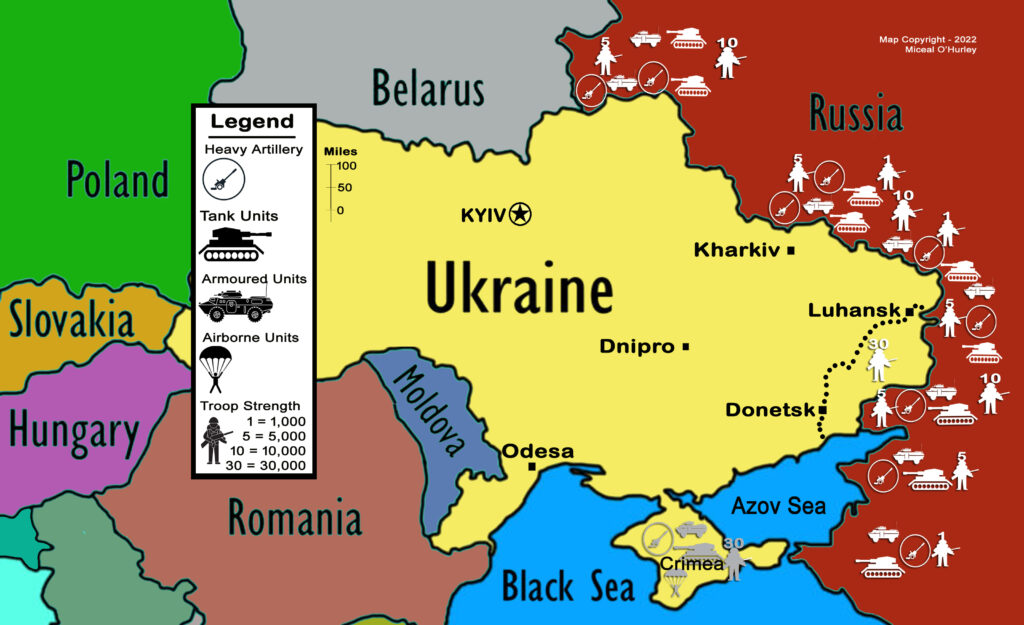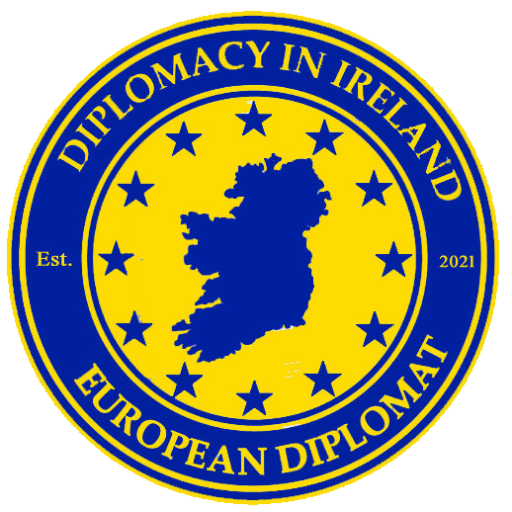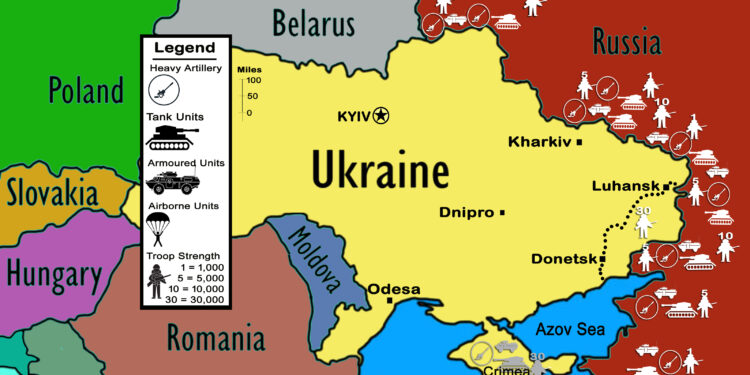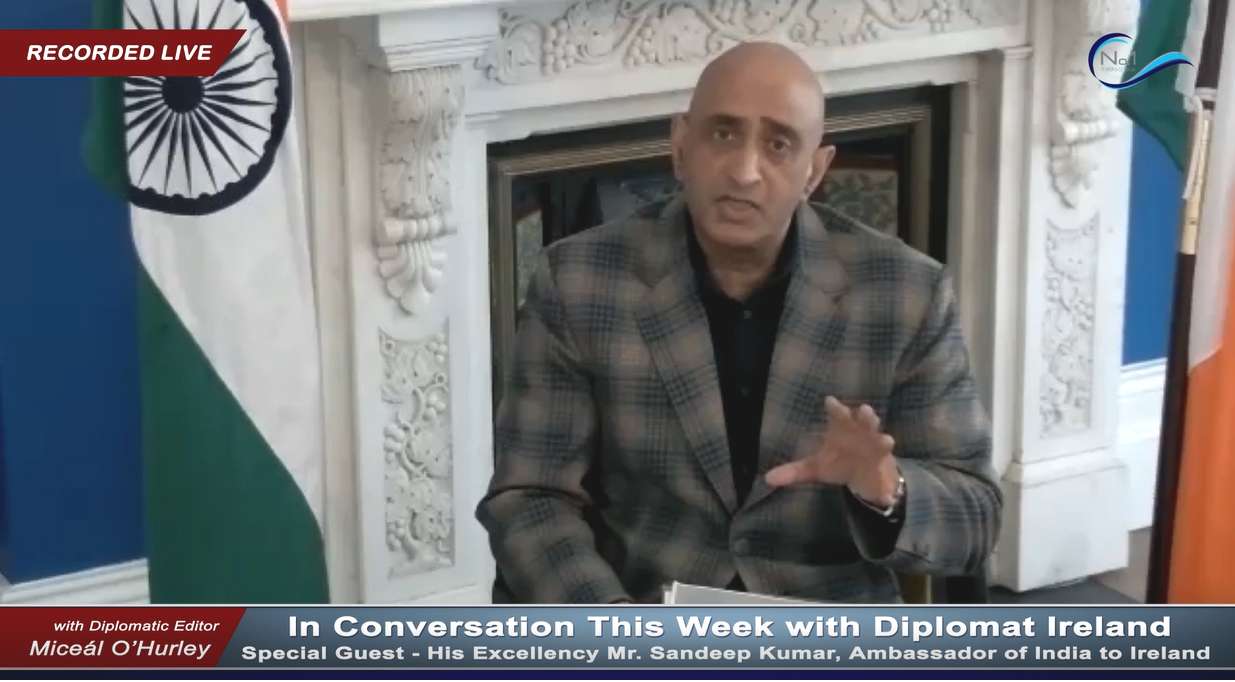by Miceál O’Hurley
GENEVA – Last night’s working-dinner meeting between the U.S. Deputy Secretary of State Wendy Sherman and Russia’s Deputy Foreign Minister Sergei A. Ryabkov concluded with the Russian negotiating team announcing a 3:00 p.m. (local time) Press Briefing – a sign that they did not expect the negotiations scheduled over the next few days to progress.
Sherman, a shrewd and experienced American diplomat seems to have disregarded the press conference as a routine negotiating tactic used by Russian negotiators and began today’s sessions determined to make diplomatic progress, all while continuing to echo Secretary Blinken’s dour hopes for progress, “… It’s hard to see making actual progress, as opposed to talking, in an atmosphere of escalation with a gun to Ukraine’s head. So, if we’re actually going to make progress, we’re going to have to see de-escalation, Russia pulling back from the threat that it currently poses to Ukraine,” said Blinken during his appearance on CNN’s ‘State of the Union’ on Sunday, prior to the commencement of negotiations.
After the talks concluded, when asked by the press pool if she believed Russia was prepared to de-escalate the situation, Sherman bluntly replied, “I don’t think we know the answer to that. We will see whether in fact Russia understands that the best way to pursue diplomacy is for them to reduce those tensions and to de-escalate.”
As for Russia’s position, Ryabkov stated, “We explained to our colleagues that we have no plans to attack,” he said. “All the combat trainings of troops are carried out within our national territory, and there is no reason to fear any escalation scenario in this regard.”
The duration and numbers of Russian troops and heavy fire-power staged on the Ukrainian border already mark it as one of the longest and largest military “trainings” in history, if that is truly what it is. Russia has declined so far to detail when the “trainings” will end or why it encompasses such a specific mix of troops, equipment, firepower and logistical supports both staged and capable of invading Ukraine.
Negotiations will continue despite low expectations on all sides.
Russian Troops Staged to Invade Ukraine
At present, upwards of 100,000 Russian combat forces, in strength, are poised along the Ukrainian border all while their belligerent-ally, Lukashenko’s Belarus, continues to make additional threats against Ukraine. A second-front threat from Belarus would extend the contact line significantly, putting the Ukrainian defense forces under greater resource stress. As NATO and the European Union have failed to bring Ukraine ‘into the fold’ over the past decade, sometimes seemingly dangling Ukraine as a negotiating chip between West and East, Russian President Putin has taken advantage of that inaction and vacuum which has left many international observers decry the promise of future NATO inclusion, “talk with no action”. This is as true with Ukraine as it is with Georgia.

Suffering from economic and social woes at home, Putin has moved an estimated 100,000 Russian combat troops (including a parachute regiment, tanks, armoured vehicles, heavy artillery and infantry) within quick striking distance of Ukraine. Russia’s new ‘Coalition-SV’ heavy artillery which comes mounted on a T-90 tank chassis has a 70-80km maximum effective ranger with a capacity of up to 16-rounds per minute. The Coalition-SV is a remarkably lethal and mobile firing platform and poses serious concerns for Ukraine’s defenses. With infantry and tank support, Russia could reasonably strike Kyiv within hours should they cross the border from the North. Russian troops along the eastern border of Ukraine could reach major metropolitan areas like Kharkiv quickly, striking a severe blow to Ukraine’s infrastructure, industry and defense capabilities.
Most luxury brand cars made in Europe use Ukrainian-made parts and components. Ukraine is also a critical production centre for aircraft parts and engines. A further Russian incursion would have a devastating impact on the already struggling European production and industrial market. Moreover, Europe came to rely on Ukraine for agricultural produce throughout the Covid-19 pandemic with Ukraine rising to third-place in agricultural exports into the EU. While the stakes may be existential for Ukraine, Europe would suffer great economic strain should Russia once again repeat its penchant for invasion in an attempt to rebuild the former Soviet sphere of influence, an oft-cited goal of Putin’s.
The stakes could not be higher and the age of Europe believing it is immune to Russian hostility because of Ukraine being a large-land-mass buffer has come to an end. Ukrainian integration in Europe is sizable and critical. From a strategic standpoint, should Ukraine be kept outside of the EU and NATO it will continue to be a target of Russian aggression given Putin’s desire to reassemble the former Soviet States into a Russian Sphere of Influence.
Europe must resolve that unless Ukraine is brought into the fold, and the relationship is formalised and normalized by EU and NATO Membership, Russia will not relent. Few in Europe have prepared themselves for the kind of economic and social stress that will be caused by Europe’s Eastern Border being moved a staggering 1,316km closer with a successful Russian invasion of Ukraine.
Use of Military Invasion and Occupation Only One of Russia’s Tools
Overt State hostility, invasions and occupations have hardly been the only instruments in the Russian toolbox. Poisonings on European soil, the killing of European civilians and refugees, included the daylight murder of Zelimkhan Khangoshvili in a public park favoured by children and families in Berlin in 2019. Khangoshvili was a Georgian citizen of Chechen descent who had fought against Russia troops during the conflict in Chechnya in the early 2000s. In December 2021, a Berlin Higher Court ruled that 56-year-old Vadim Nikolaevich Krasikov, a Russian citizen, travelled to Berlin and carried out the murder of Khangoshvili upon the specific orders he received from, “… State bodies of the Russian central government.”
The litany of murders of those perceived to be hostile to Russia’s unfettered use of military force in Europe, their oppression and killing of journalists and dissidents, including the attempted poisoning of Russian opposition leader Alexei Navalny, has included countless operations conducted on European soil. The record is replete with acts of politically motivated murder carried out in Europe for the benefit of the Kremlin over the past 2-decades when Putin has reigned-supreme in Russia.
Civilians are not Russia’s only targets. In 2016, Montenegro’s Chief Prosecutor alleged that Russia was engaged in an assassination attempt of the Prime Minister. A court in Montenegro has sentenced 13 people, including two Russian secret service operatives, to up to 15 years in prison after they were convicted of plotting to overthrow the Balkan country’s government and prevent it from joining NATO. In May 2021, the Czech Republic expelled Russian diplomats who were involved with attempts to destroy weapons depots and conduct other intelligence and sabotage-related activities.
All of this is beside the incessant and nefarious attacks upon Europe’s critical infrastructure, governments, banks and businesses from the notorious ‘troll farm’ inside St. Petersburg, Russia run by a close associate of Putin’s. Additionally, criminal gangs, who operate with the tacit permission if not the instruction of the Russian State, have been engaged in activities from financial crimes to extortion, including the complete shut-down of Ireland’s Health Service Executive (HSE) which took several months to bring back online during the summer of 2021.
Between shutting down basic health care in a neutral nation like Ireland to invading computer networks throughout the world with the ‘Solar Winds’ Trojan Horse that infiltrated networks everywhere before being detected months after its covert deployment, Russia’s toolbox is full of lethal and non-lethal tools it uses to exert power and undermine opponents throughout the world. Russia’s use of criminal gangs to attack a nation like Ireland, crippling the HSE and endangering the lives of ordinary Irish citizens, has pushed the small but influential Irish State to the brink of its historically neutral stance.
Almost every European nation has reported Russian election interference. The threat to Europe’s commitment to peace, prosperity, democracy, freedom and the very values Europe has enumerated and espoused over the years are under constant threat by Russia’s meddling in domestic elections at the ballot box. In 2020, faked correspondence purportedly meant to inflame tensions between Loyalists and Nationalists in Northern Ireland were deployed by multiple fake Facebook accounts traced back to Russia. Even neutral Ireland is not immune from Putin’s plans to disrupt the West, undermine democracy and disrupt a hard-won peace on this island.
Diplomatic Tensions Highest Since Demise of USSR
On the eve of the Geneva negotiations tensions between Russia and the United States and Europe have not been higher since the Cold War. Despite numerous warnings from the U.S. and European leaders, Russia has pursued an unrelentingly belligerent posture, occupying the Transnistria Region of Moldova against the will of its people, invading and occupying Georgia 13 years ago in a conflict that is anything but ‘static’, and invading and occupying parts of Ukraine despite pledging to respect and actually defend Ukraine’s territorial integrity through their commitments in the OSCE brokered Budapest Memorandum in 1994.
Putin’s Demands At-Odds with Principles of Freedom, Democracy and Offend European Values
Putin and his hybrid-warfare machine has been working full-throttle in the months leading up to this precipice. Using social media and media-dupes to convey their propaganda that Russia needs security assurances from the West, Russia has portrayed Ukraine, Europe, NATO, the U.S. and U.K. as predators and they the peace-loving victims of aggression. The last 30-years have told a different story.
Appearing on CNN, Blinken claimed, “It’s exactly the opposite. First of all, why are we here? We’re here because repeatedly over the last decade, Russia has committed acts of aggression against neighbours – Georgia, Moldova, Ukraine in 2014, and now the renewed threat about Ukraine today” he continued. “Second, there are large principles at stake that go to the fundamentals of international peace and security” said Blinken. The U.S. ruled out discussions of pulling troops from Eastern Europe and guaranteeing that NATO would not expand to include Ukraine, reiterating that neither Europe, NATO or the U.S. will have Russia dictate to them sovereign decisions they might make, especially at the point of a gun.
After colluding with Nazi Germany’s Hitler to divide-up Europe in the Molotov-Ribbentrop Pact in which the USSR and Nazis started World War II (before Hitler turned on Stalin and invaded Russia), Russia remains the only European country to invade and occupy another since the end of World War II. Their coercive use of force in Poland, Hungary, the Czech Republic and other European nations was again revived after the collapse of the Soviet Union. Russia’s invasion and occupations in Moldova, Georgia and Ukraine, and the horrifying scale and brutality of their human rights abuses against Europeans is appalling.
Is Russia Really Going to Invade or is this Posturing by a Weakened Putin
Without access to the intelligence shared between major European partners, NATO and the U.S., it is anyone’s guess if Putin is serious about invading Ukraine. If he is bluffing for bargaining power, the threat would need to be convincing. It is. The combination of troops deployed at the border, the long-lines of logistical support pre-positioned to assist a ground combat campaign and civilian satellite photography showing the Russia appears to be building crematoria close to the Ukrainian border where troops are deployed would convey that Russia’s threat is real and convincing. With wet weather giving was to freezing soil, the conditions for a ground invasion are improving, making this round of negotiations critical.
Still, Putin must realise that the Ukraine he undermined with the help of his crony, Ukrainian President Viktor Yanukovych who betrayed the democratically expressed will of the Ukrainian people and refused to sign legislation to integrate Ukraine into the European Union fold, is not the battle-hardened, committed and complacent nation from which he invaded, temporarily occupying Donbas and attempting to illegally annex Crimea. The construction of mass crematoria not only signals Russia’s foreknowledge that an invasion would be so costly that they would need to destroy bodies rather than see them repatriated to Russia in endless truckloads of coffins, but acknowledges Ukraine will, ‘not go gently into that good night’.
In an early-January teleconference between Putin and U.S. President Biden, Biden made clear that Russia would face severe repercussions if they again invaded Ukraine. The U.S. and other Western countries have increased defensive weapons systems deployment and aid to Ukraine in recent weeks. Any belligerence on the part of Russia would almost assuredly incur further economic sanctions. While the toll may bring pain to the West, the only hope for deterring Putin seems to be a unified stance.
Why the Threat? Why Now?
Putin is aging. Like all aging authoritarians and dictators, they seek to attain their loftiest goals during their lifetime and copper-fasten them with integration and institutionalisation. At 69-years of age, Putin doesn’t have that much time left (average life-span of Russian male is 73.08 years, and declining). More importantly, the State over which he presides may not retain power (real or perceived) much longer.
Sanctions imposed after Russia’s temporary occupation of Eastern Ukraine and Donbas have dealt a telling impact on Russia’s economy. Many of Putin’s oligarch friends have quietly been funnelling their money out of Russia for investment abroad, a ‘tell-tale sign’ they know the end is nearing. Clearly, they Putin no longer commands the fear and dread upon those he allows to enrich themselves off of the average Russia citizen that in years past saw such creatures disappear into Russian prisons or flee for their lives to the West.
The Nord Stream 2 pipeline which has consumed so much Russian economic and political capital over the past 15-years to set-up Putin’s goal of being able to manipulate Europe’s energy security has ground to a halt owing to Russia’s own miscreant behaviour. Financial resources are dwindling. Political capital is spent. Increasingly, Russia’s only allies are the ‘usual suspects’ who back Russia at every turn, no matter how self-injurious. Even China who often sides with Russia may not be of much help to Putin given their own precarious economic woes and their focus on Africa and the South China Sea region. Aside from being a spectator with an interest in seeing how far Putin can get with bullying so they can gauge their own conduct with Taiwan, China seems an unlikely saviour for Putin, leaving him to other decrepit puppets like Belarus’ Lukashenko and eroding ‘democracies’ like Armenia.
But most frightening for the former Communist and KGB officer is Putin’s fear of revolt from within. Looking at the endings of Benito Mussolini, Idi Amin, Nicolae Ceausescu, Muammar Gaddafi and a chorus of former Soviet leaders who were literally air-brushed out of history after being murdered, Putin is fully cognisant that there is no good ending for an authoritarian that loses power. He can be expected to use all of his resources to retain authority. The gamble of confronting Ukraine, Europe, NATO, the U.K. and U.S. may prove a ‘bridge-too-far’ for Putin. Still, Putin may view this as his last, best effort to create a cordon-sanitaire to safeguard Russia from his unreasoned paranoia about the West and he may be willing to risk plenty to gain any leverage and concessions, whatsoever.
Timing is Everything
2022 brought in a New Year full of surprises. Kazakhstan, long considered an stable government owing only to its authoritarian regime and plenty of old-economy energy supplies, erupted in riot. Ostensibly, the Kazak people were infuriated by a new energy policy which saw prices rise sharply. Only a few days old, without the bite having been suffered by the populace, it is far more likely that the energy cost rise was simply a match that set a powder-keg alight. The rioting that occurred, including the occupation and destruction of government buildings, was more reflective of a society that no longer felt content to suffer-in-silence and wanted a change of Government. That happened. The Government resigned.
However, Putin was forced to send ‘peacekeepers’ to help keep the authoritarian despot President, Kassym-Jomart Tokayev, in power. The latest reports are that 164 are dead, hundreds wounded and thousands imprisoned under martial law. The Kazakhstan police and military have been joined with their ‘peacekeeping’ allies from the pact of former Soviet regimes in Russia, Armenia, Belarus, Kazakhstan, Kyrgyzstan and Tajikistan with ‘shoot to kill’ orders when encountering civilians on the streets. Nobody in the civilised world believes this is a ‘peacekeeping’ or ‘law enforcement’ operation and instead call it what it is – the last ditch efforts to prop-up a repressive regime.
Putin, aware of the millions of Russians who support Alexi Navalny and have grown disenchanted with the lack of economic development, the decreasing life expectancy in Russia and the extension of the retirement age knows that the fall of his equally aging cronies in Belarus, Kazakhstan and elsewhere would be perceived as weakness at home. If observers of Putin agree on one thing it is that Putin opts for the projection of power over real power whenever he can get away with it.
Genuine Unity is Europe’s Only Hope for Preserving its Values with Peace
It is time for Europe and the world to stand-up to Putin before Ukraine disappears and Poland, Hungary, Slovakia, Moldova and Romania become the new borders of a free and independent Europe. If Ukraine is allowed to fall to Putin, or he can dictate the size or membership of NATO, or coerce the West to agree that all former Soviet States must leave NATO and those who are not members be barred from membership it will send a signal of defeat to the world and the age of dictators will begin to re-emerge 100-years after the nascent rise of those who threw the world into war in the last century.
















































